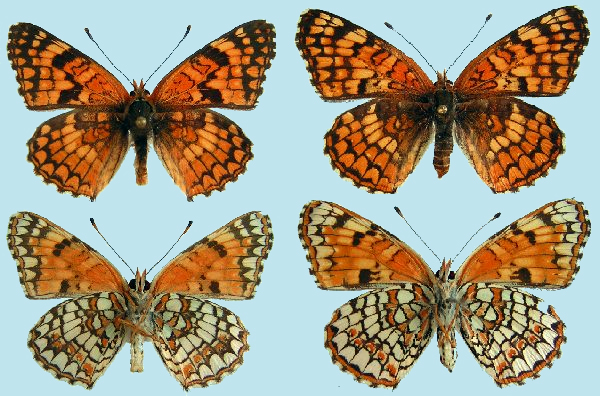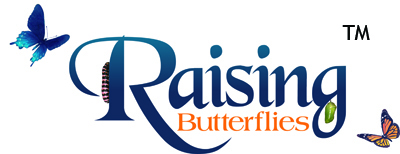Chlosyne acastus acastus

Photo Life History:
Habitat: Mountain Canyons; Pinyon Juniper; Utah's West Desert Mountain Ranges
Host Plants: Chrysothamnus greenei; Chrysothamnus viscidiflorus
Suitable Lab Host Plants: Aster engelmannii
Caring for Live Female Butterflies: Feed females regularly
Methods of Female Oviposition: Portable Cages.
How to Find Eggs: Females lay eggs in large clutches on host plants. Look on the ventral side of leaves towards the lower portion of the host plant. The easiest way to raise this butterfly, however, is to get eggs out of females.
How to Hatch Eggs: Consolidate eggs into one container.
How to Find Caterpillars in the Field: To find gregarious pre-diapause larvae, look for webbing (almost like a spider web) on the plant. Post-diapause larvae can occasionally be found either resting at the base of the host, off the plant altogether, or feeding on host plant flowers or leaves. Finding larvae in the field can be difficult because of how common the host plant is. I have had more luck finding post-diapause larvae in the spring before their main flight than pre-diapause larvae after their main flight. Some pre-diapause larvae disperse before hibernation.
Caterpillar setups: For pre-diapause larvae, I recommend using the open terrariums or open bucket technique. Overcrowding is not generally an issue since larvae are gregarious in nature. For post-diapause larvae, see Post-Hibernation Strategies below.
Larva to Pupa: Caterpillar silks to leaf or twig; creates and attaches cremaster; hanging as a J before pupating.
Number of Broods per Year: 1-2
Overwintering Stage: Third or Fourth Instar Larva.
Overwintering Strategies: Your Own Backyard.
Post-Hibernation Strategies: When you feed post-diapause larvae after overwintering, if you're only rearing a few caterpillars, I highly recommend isolating caterpillars from sibling caterpillars using the twin cup method (or similar) in order to avoid re-diapause--an extremely common situation with checkerspots. (See this video for more information on the twin cup method.)
Avoiding Diapause Techniques: Jacque Wolfe reports that pre-diapause larvae diapause anyway when reared under 24 hours of light. See notes below for partial success with other subspecies of Chlosyne acastus.
Disease Prevention: For post-diapause larvae, change out host plant and remove frass every two to three days using the twin cup method.
Emergence: Emergence Container
Field Notes: With regards to exposing pre-diapause larvae to 24 hours of light, Jacque Wolfe reports that of approximately 300 C. acastus dorothyi larvae reared from collected ova and first instar larvae, 92 went through to adults and 208 diapaused whereas of approximately 100 C. acastus sterope larvae obtained from live females, 17 larvae went through to adults and 87 diapaused.
Population of this and other Great Basin checkerspots can fluctuate drastically depending upon rainfall, parasitism, and other factors.

